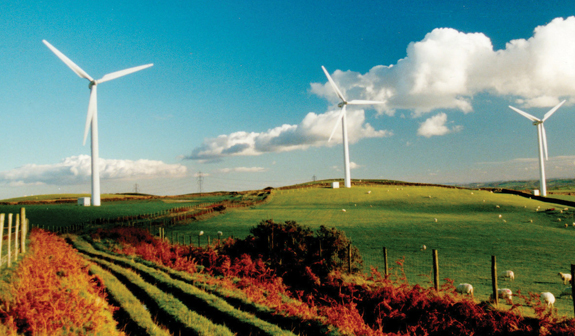
With more than 90% of its electricity generated from renewable energy sources and goals to reach 95% by 2014, Costa Rica is certainly one of the greenest countries on the planet. It also is on track to become the world?s first carbon-free economy.
I recently returned from a 12-day tour sponsored by Global Renewable Energy Education Network (GREEN) and showcasing renewable and sustainable energy in Costa Rica.With this experience fresh in my mind, I thought I?d take this opportunity to share some of the educational highlights with Energy Currents readers.
Costa Rica: A renewables paradise
Mother Nature has greatly influenced Costa Rica?s commitment to renewable energy. The country is blessed by copious amounts of rainfall ? most of the country receives more than 100 inches of rain per year. Thus, it?s no surprise that over 80% of Costa Rica?s electricity is generated by hydro facilities. The country also boasts considerable geothermal power as well as growing wind assets, solar, and biomass facilities.
ICE?s role in renewables
The Instituto Costarricense de Electricidad or ICE (pronounced ee-say) of Costa Rica is the state-owned electric monopoly that provides power to over 98% of Costa Rican homes. While many of the facilities that produce this power are ICE-owned, a small percentage is owned privately under rather non-traditional contracts. In many cases, these facilities are privately owned for a period of 15 years and are then handed over to ICE, which then owns and operates them. After a decade-long break from allowing such projects, ICE recently announced a plan to again accept bids for privately owned renewable projects (100 MW of hydro and 40 MW of wind). The plan intentionally aligns with Costa Rica?s goal of becoming a carbon-free economy.
ICE also implemented a net metering program in 2010 whose goals were, again, to increase renewable energy production and thus the country?s energy independence. The pilot program also allows ICE to study the effects of distributed generation on its grid as well as to promote new renewable technologies.
A countrywide commitment
Costa Ricans are very proud of their renewable and sustainable efforts, which come at a premium price. Average residential rates are over 30 cents per kWh, and this may soon increase. Yet oddly, citizens are not likely to complain. The dedication to a renewable/sustainable society seems to be a shared goal, and the monetary cost of this commitment is widely accepted as are the variables that can affect it.
For example, with such a large portion of electricity needs met by hydroelectric power, the country is hugely dependent upon rain. And in dryer years, as 2012 has so far been, ICE is concerned that it cannot generate enough supply to match demand. Less water means less hydro power is available. This means costs increase (since power must be purchased from other sources) and so does the amount of power generated from fossil fuels.
The GREEN tour afforded unprecedented access to renewable facilities in Costa Rica. My group and I enjoyed guided tours of hydro facilities, a biomass plant/sugar cane refinery, a geothermal plant, and a wind farm. Not only were we inches from the equipment housed in these facilities (imagine access like this in the U.S.!), but also heard first-hand accounts of how such equipment is run and ICE?s unique perspectives on electricity production.
While GREEN is currently focused on providing this experience to college-level audiences, Enerdynamics and GREEN are discussing a partnership where this unique opportunity could be available to business professionals. For more information, please contact me at jferrare@enerdynamics.com.
Source: SolarFeeds.com
Source: http://news.co.cr/costa-rica-committed-to-renewable-energy/15673/
bishop eddie long madonna give me all your luvin video roseanne barr president green party day 26 gronkowski new hunger games trailer
No comments:
Post a Comment
Note: Only a member of this blog may post a comment.